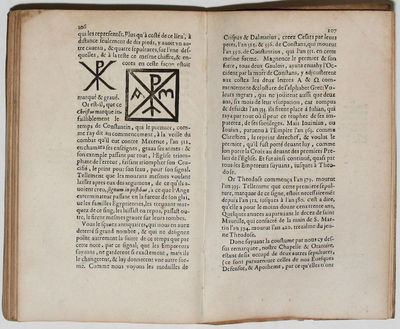first edition Hardcover
1610 · Angers
by MENARD, Claude
Angers: Antoine Hernaut, 1610. Hardcover. Near Fine. 8vo - over 7¾ - 9¾" tall. [14] ff including engraved title page by Thomas de Leu, 124 pp. Bound in contemporary vellum, title page in fine impression and text very crisply printed, an excellent copy. Extremely rare first and sole edition of this work of polemical antiquarianism, seeking to prove that the remains of St. James the Apostle are not buried at Santiago de Compostela, as Europe's most pious pilgrims had believed since the 9th century, but rather in the vaults of the chapel of St. Maurille, Angers (subsequently destroyed in 1791). An interesting and exceptionally rare example of Counter-Reformation (truncated)


